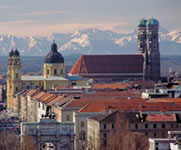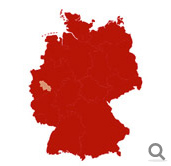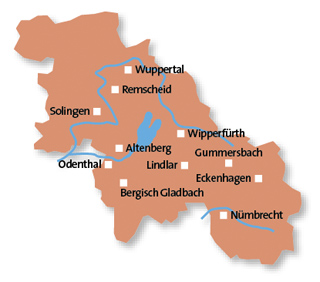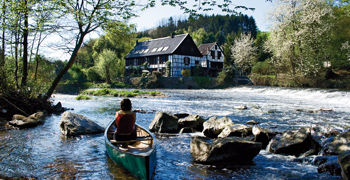
Historical Towns
- Historical towns in Brandenburg
- Cathedral Towns and Cities in Saxony-Anhalt
- The innovative Anhalt-Wittenberg Region
- Enchanting towns in the Harz
- The beautiful towns and cities in Saxony
- Towns and cities of culture in Thuringia
- Beautiful towns of Franconia
- East Bavarian traditional towns
- Alpine towns in the Allg�u
- The eastern Akpine Foothills and their towns
- Towns and villages in the western foothills of the Alps
- Mediterranean towns on Lake Constance
- Towns in the Swabian Alb
- Unspoilt towns in the Black Forest
- Towns for refined tastes in the Heilbronner Land
- Towns in the Odenwald
- Wine towns in Rheinhessen
- Saarland, a region of contrasts
- Romantic towns in the Hunsr�ck and Nahe Regions
- Idyllic towns and villages in the Moselle Region
- The Ahr Rhine Eifel holiday region
- Wine towns on the Romantic Rhine
- Modern towns and cities in the Bergisches Land Region
- The Lahn Valley and its fairytale towns
- Historical towns in Kurhessisches Bergland
- Sauerland's scenic towns
- Fairytale towns in the Weserbergland Hills
- Majestic towns in the M�nsterland Region
- The nine stars of Lower Saxony
- North and East Frisian Islands
- Vibrant Schleswig-Holstein
- Maritime towns along Mecklenburg's Baltic Coast
- Historical Hanseatic Towns
- Germany's Baltic Sea Islands
- The Mecklenburg Lakes
Contact and information
Nature and industrial heritage wherever you look

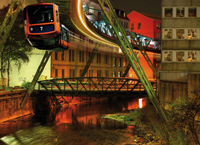
Bergisches Land nature reserve
The Bergisches Land region is one gigantic nature reserve. It stretches from Wuppertal in the north to the fringes of the Westerwald forest in the south, and from the gourmet paradise of Bergisch-Gladbach with its star-rated restaurants in the west to the Sauerland foothills in the east. It is the ideal destination for a short break surrounded by unspoilt highland scenery. Idyllic streams criss-cross the landscape chap-eroned by marked trails for walkers. The climatic health resorts of Nümbrecht and Eckenhagen make ideal bases for longer stays. Wipperfürth is the region's oldest town and has a rich Hanseatic heritage: its Coin Minter monument on the market square commemorates the granting of the town charter in 1222 and permission to mint coins.Odenthal
On the western edge of the Bergisches Land nature reserve lies the village of Odenthal where the Altenberg Summer of Culture is held every year. This festival of music offers a wide-ranging programme of jazz, chamber music and church music. It's a great opportunity to enjoy concerts and culture amid picturesque surroundings. The main venues are the Church of St. Pancras, Strauweiler House and Altenberg Cathedral. The latter, an imposing Gothic building made of trachyte and tufa, is part of a Cistercian Abbey founded in 1133.Remscheid
Müngsten bridge, which connects Remscheid and Solingen, is Germany's highest steel railway bridge and a major feat of engineering. Beneath it lies Müngsten Bridge Park which attracted some 300,000 visitors when it opened in 2006 and features an extraordinary aerial ferry. It's well worth paying a visit to the pretty village of Remscheid- Lennep with its delightful old quarter. East of here is one of the region's twelve reservoirs: the Wuppertalsperre containing 25 million cubic metres of water. A number of years ago it was converted into a recreation area perfect for swimming, diving, sailing, boating and leisurely walks.Solingen
Highly specialised craftsmen have made swords, épées and household knives for hundreds of years in Solingen. Their reputation precedes them wherever they travel and it paved the way for the Solingen name to become a protected hallmark for quality knives and scissors. Solingen Blade Museum documents the history of bladesmiths as well as makers of knives, scissors and cutlery. Further insight into everyday life in bygone days can be found in the museum at Burg Castle on the Wupper river, one of the largest reconstructed castles in western Germany.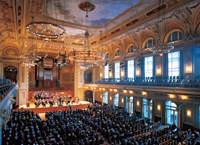
Wuppertal
Wuppertal's main attraction and the emblem of the city is the suspension monorail, which has been ferrying passengers high above the streets and the river since 1900. Wim Wenders immortalised this unique public transport service in his road movie Alice in the Cities. Wuppertal zoological garden is one of Germany's oldest and most scenic zoos, providing a home to some five thousand animals from every continent. The Vohwinkel Flohmarkt has a place in the Guinness World Records as the largest oneday flea market.Coffee and everything that goes with it
The Bergische Kaffeetafel is a local culinary tradition that goes way beyond traditional coffee and cake. It typically includes yeast cake or raisin bread and an assortment of regional breads with butter, honey, quark, cheese, wurst and ham as well as pear, apple and sugar beet syrups. Rice pudding with cinnamon sugar, Bergisches Land waffles, biscuits and cake are also served. Most important of all is the dröppelmina, the traditional coffee pot.Travel Planner
Select an option...
Romance and charm
The Bergisches Land has many delightful towns and villages with narrow medieval lanes and enchanting market squares. A fine example is the old quarter of Remscheid-Lennep, birthplace of Wilhelm Conrad Röntgen who discovered the x-ray.
Food and drink
Wupper light and Wupper dark if you have the choice between these two traditional beers then you must be in the Wuppertaler Brauhaus. Built in 1892 as the town baths, the restaurant now offers a different kind of refreshment to visitors.
History and tradition
The German Tool Museum in Remscheid displays an extensive collection of tools from the Stone Age to the 21st century. Less than a mile away is the Steffenshammer forge, a waterpowered hammer works from 1746 that is now open to the public.
Nature and scenery
A leading attraction in Müngsten Bridge Park is the aerial ferry which takes passengers from one side of the Wupper to the other. The ferry glides above the river along two steel ropes and is powered by hand.
 Skip to content
Skip to navigation
Skip to subnavigation
Skip to search
Skip to content
Skip to navigation
Skip to subnavigation
Skip to search




